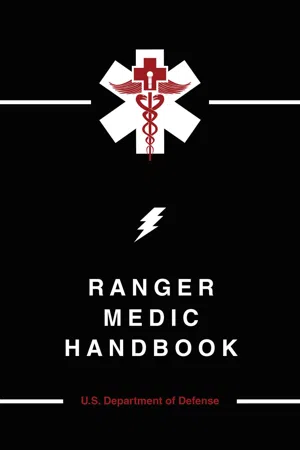About this book
Historically in warfare, the majority of all combat deaths have occurred prior to a casualty ever receiving advanced trauma management. The execution of the Ranger mission profile in the Global War on Terrorism and our legacy tasks undoubtedly will increase the number of lethal wounds. Ranger leaders can significantly reduce the number of Rangers who die of wounds sustained in combat by simply targeting optimal medical capability in close proximity to the point of wounding. Directing casualty response management and evacuation is a Ranger leader task; ensuring technical medical competence is a Ranger Medic task. A solid foundation has been built for Ranger leaders and medics to be successful in managing casualties in a combat environment. The true success of the Ranger Medical Team will be defined by its ability to complete the mission and greatly reduce preventable combat death. Rangers value honor and reputation more than their lives, and as such will attempt to lay down their own lives in defense of their comrades. The Ranger Medic will do no less.
Frequently asked questions
- Essential is ideal for learners and professionals who enjoy exploring a wide range of subjects. Access the Essential Library with 800,000+ trusted titles and best-sellers across business, personal growth, and the humanities. Includes unlimited reading time and Standard Read Aloud voice.
- Complete: Perfect for advanced learners and researchers needing full, unrestricted access. Unlock 1.4M+ books across hundreds of subjects, including academic and specialized titles. The Complete Plan also includes advanced features like Premium Read Aloud and Research Assistant.
Please note we cannot support devices running on iOS 13 and Android 7 or earlier. Learn more about using the app.
Information
| 1. | ACETAMINOPHEN (TYLENOL) | 325-650 mg PO q4-6h prn (max: 4 g/d) |
| 2. | DEXAMETHASONE | 0.25–4 mg PO bid-qid; 8–16 mg IM/IV q1–3wks |
| 3. | DIAZEPAM (VALIUM) | 2-10 mg PO tid-qid; 5-10 mg slow IV push |
| 4. | DIPHENHYDRAMINE (BENADRYL) | 25-50 mg IV/IM/PO q4-6h |
| 5. | EPINEPHRINE | 0.1–0.5 mL SC/IM q10–15min (1:1000 soln = 1mg/1ml) |
| 6. | ERTAPENEM (INVANZ) | 1g IV/IM q24h |
| 7. | FENTANYL ORAL LOZENGES (ACTIQ) | 400-800 mcg (max: 1600 mcg/d) |
| 8. | GATIFLOXACIN (TEQUIN) | 400 mg IV/PO daily |
| 9. | HETASTARCH (HEXTEND) | 500–1000 mL IV |
| 10. | IBUPROFEN (MOTRIN, ADVIL) | 400–800 mg PO tid-qid (max: 3200 mg/d) |
| 11. | KETOROLAC (TORADOL) | 15-30 mg IV/IM q6h |
| 12. | LIDOCAINE (XYLOCAINE) | Infiltration 0.5%–2% injection |
| 13. | MELOXICAM (MOBIC) | 7.5–15 mg PO daily |
| 14. | MORPHINE SULFATE (MSO4) | 5–15mg slow IV push, titrate to pain |
| 15. | MOXIFLOXACIN (AVELOX) | 400 mg PO/IV daily |
| 16. | NALOXONE (NARCAN) | 0.4–2.0 mg IV, repeat q2–3min up to 10 mg prn |
| 17. | PROMETHAZINE (PHENERGAN) | 12.5-25 mg PO/IM/IV q4-6h prn |
| 18. | SODIUM CHLORIDE, 0.9% (NS) | 500–1000 mL IV; 5-50 mL IV for med dilution or flush |
Table of contents
- Cover
- Halftitle
- Title Page
- Copyright
- Foreword
- Table of Contents
- Section One
- Section Two
- Section Three
- Section Four
- Section Five
- Abbreviation List
- Conversion Charts
- The Ranger Medic Code
- The Ranger Creed
